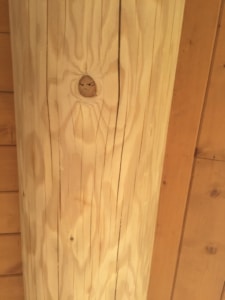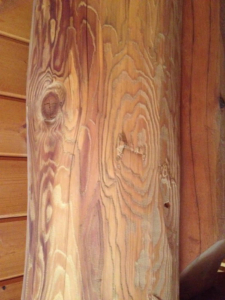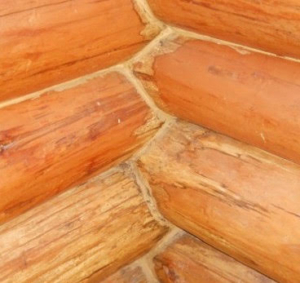There are 3 basic ways of removing the old stain and deteriorated UV damaged wood from a log home. Sanding, media blasting and chemical removal. Which one is best?

SANDING
Sanding is labour intensive process using angle grinders and sanders removing the old stain and deteriorated uv damaged wood.
Pros:
This process is the the most environmentally friendly process only removing what does not belong. This process does not bring any foreign products on site that may potentially cause issues with the log home. It will leave the smoothest and most natural appearance. Easiest to clean and maintain.
Cons:
This process is labour intensive and is the most expensive way to restore.
Smoother finish does not allow for deep stain penetration and requires more frequent maintenance coats.

MEDIA BLASTING
Media blasting is a process in which media is applied against a surface using compressed air to remove old stain and deteriorated uv damaged wood.
Pros:
This process is the most economically friendly process and requires less time on site. The rougher finish allows for deeper stain penetration and requires less frequent maintenance coats.
Cons:
This process can leave the surface of the log home with a rough raised grain surface exposing different layers of the wood and raising the grain of the logs. The roughness on the surface can cause blotchiness when stained. Some medias are organic such as corncob and walnut shells which can absorb moisture making any organic media that is left behind acceptable to decay and mold, a log homes worst nightmare. Media blasting can blow dust into your log home due to the high pressure used in blasting.

CHEMICAL REMOVAL
Chemical removal is a process in which a chemical is sprayed onto the surface of the logs and washed off with pressure washing.
Pros:
It will remove stain efficiently. Least expensive.
Cons:
It will not remove the deteriorated uv damaged wood The chemical may also ruin existing chinking sealants. It may also will leave blotchiness and streaks and may leave water stains if not rinsed properly. Some chemical removers will change the ph on the surface of the logs, which may change how the stain adheres to the logs.